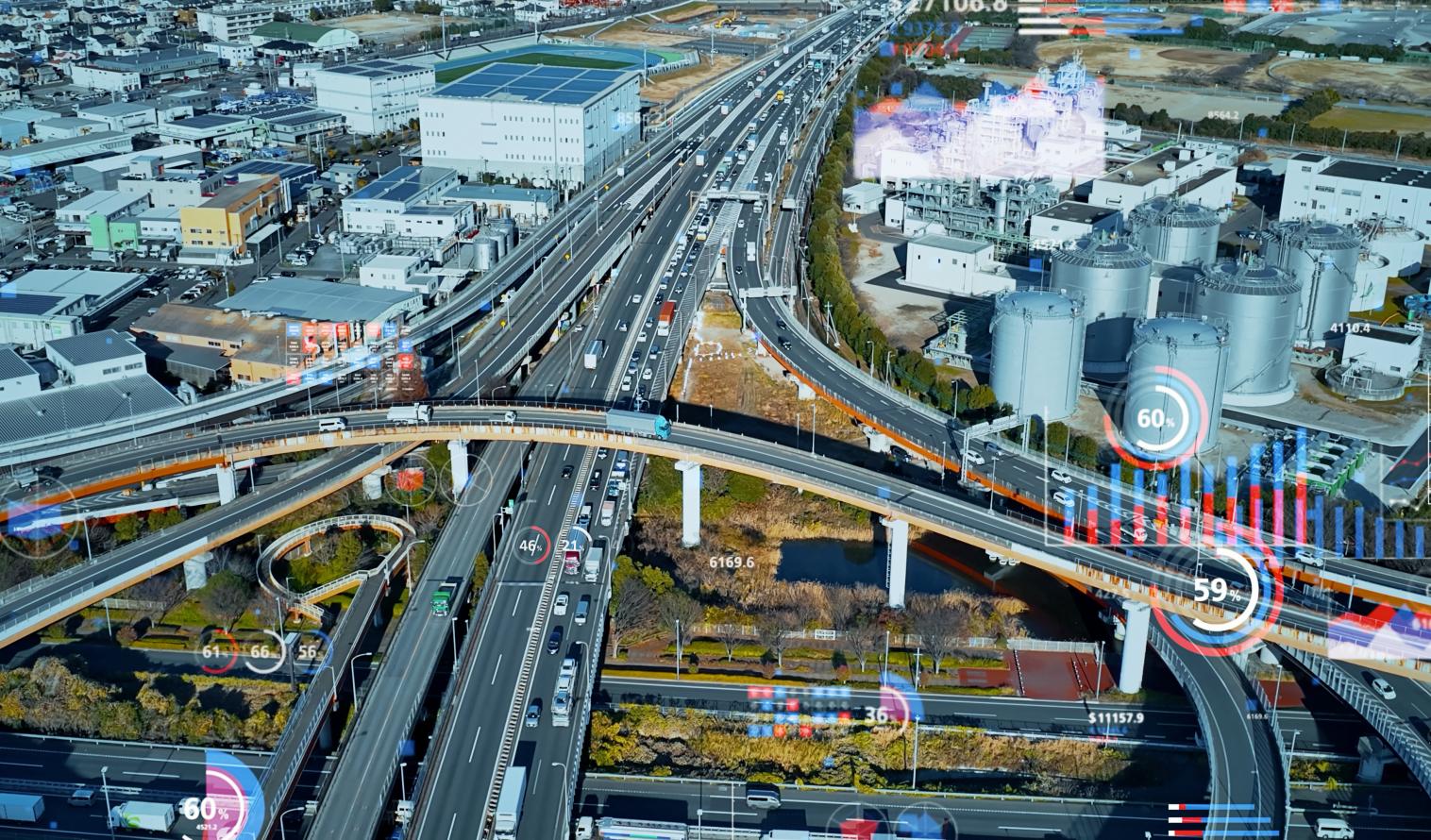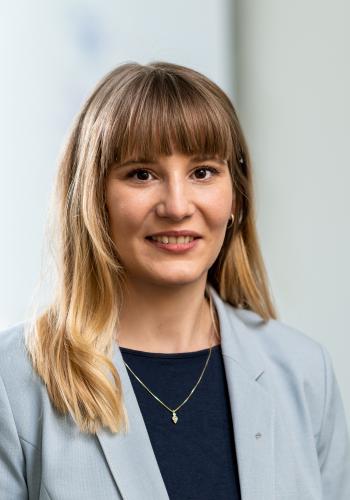Titel
Mobility of the futureEpisode 1: Thinking energy & transport together
The scientific basis is there – now the technologies need to be applied more widely. How DLR Projektträger is accelerating the transfer.
Interview by Evelyn Stahl
The future of mobility
In a short series, DLR Projektträger experts Dr Jens Erler, Dr Tania Hancke and Jenny von Wnuck Lipinski shed light on the trends surrounding the energy and transport transition.
Episode 1: Thinking energy and transport together
Episode 2: The challenge of charging infrastructure – farewell to the plug-in hybrid
Episode 3: Transport transition in urban and rural areas (from the 20th September)
Evelyn Stahl: The coalition agreement of the current Federal Government contains goals formulated for the future of energy and mobility. For example, by 2030, at least 80 per cent of electricity should is to from renewable energies, 15 million e-cars are to be on the roads, and one million public charging points are to be available. What needs to be done to achieve the goals the government has set itself?
Jens Erler: The German government's renewable energy target is a response to the Paris Climate Agreement of 2015, in which the international community agreed to limit global warming to two degrees by 2050 compared to the pre-industrial era. For us in Germany, the 80 per cent target is a challenge. When we talk about renewable electricity here, we mainly mean wind power and solar energy, a bit of biogas, geothermal energy and hydropower. Especially in the latter area, however, all potential sites have actually already been developed. This means that the energy transition will mainly take place in the area of wind and solar power. But since these are subject to greater fluctuations, the big challenge is to expand the necessary storage capacities. Currently, we still have coal and gas-fired power plants with which we can compensate for fluctuations in energy production, but if we want to phase out coal – as set out in the coalition agreement – storage facilities must be able to flexibly absorb this energy in order to access it in times of low production. Especially in view of the current geopolitical situation, the issue is coming to a head.
If there is an overproduction of electricity, the vehicles could absorb it flexibly and also release it back into the power grid as needed. So we have to see the cars as mobile storage units.

E-cars secure grid stability
Evelyn Stahl: What have these considerations got to do with the future of mobility?
Jens Erler: If the mobility turnaround leads to millions of electric cars on the roads in the future, then in principle every household will have a very large battery in the garage. Critics of the expansion warn that this will create large loads for the electricity grid. From our point of view, however, electromobility offers an opportunity: if there is an overproduction of electricity, the vehicles could absorb it flexibly and also release it back into the power grid as needed. So we have to see the cars as mobile storage units.
Tania Hancke: The storage potential becomes clear when you think about commuters who drive to work in the morning and then leave their car in the car park all day. During this time, I can easily compensate for fluctuations in the power grid with these fleets of vehicles, whereas, for example, I wouldn't be able to use fire engines or ambulances for this purpose.
Jens Erler: To clarify things, let's assume that we would reach the target set by the German government of 15 million electric vehicles and that they would be purely battery-powered cars with a battery capacity of 50 kilowatt hours – that is normal for a mid-size car nowadays and will probably also be available in the compact class in the future. This would give a total capacity of 750 gigawatt hours, which would cover the average electricity demand of the entire country for eight hours. In relation to existing storage technologies, this is almost spectacular. At present, there is basically only one reliable commercially available storage technology, pumped-storage power plants. These plants are extremely important, but for geographical reasons they offer hardly any potential for expansion. The storage capacity of the predicted e-vehicles would be larger by a factor of 20 than the sum of the current pumped storage power plants.
Evelyn Stahl: And why hasn’t this insight yet been put into practice? Why aren't e-cars already being used as electricity storage units on a larger scale?
Jens Erler: The interface between the car and the electricity grid is not yet ready for the market. Even if you wanted to, you would not be able to buy a car on the market that offers this functionality via the common charging station interface. We are currently working on projects funded by the BMWK to ensure that this technology will be available in the next two or three years.
Citizens as an active part of the energy transition
Jenny von Wnuck Lipinski: Ultimately, the mobility of the future will function quite differently from the way we currently know it with combustion engines. The concept only works if people actively participate in the energy transition and make their e-cars available, at least in part, as a buffer in the power grid. The provision of the battery as a buffer can be remunerated, but one must be aware that a corresponding service is provided in return. Redox reactions take place within the batteries during the charging and discharging process, which can lead to a degradation of performance, i.e. wear and tear. How deeply and at what temperatures the battery is discharged plays a role. There are already good coping strategies, which a good battery management system in particular takes care of. But theoretically, the probability that something will go wrong, that battery performance will suffer, for example, increases with each charging cycle. This must be communicated transparently to the citizens.
The mobility of the future works very differently from the way we know it with combustion engines. The concept will only work if people actively participate in the energy transition and make their e-cars available, at least in part, as a buffer in the power grid.

Jens Erler: The approach of thinking mobility and energy transition together has immense advantages. For example, there are studies that indicate that the use of bidirectional charging can reduce grid expansion costs by half. The only question is what incentives can be set so that the customer also participates in securing grid stability? Ultimately, one makes one's own vehicle battery available to provide grid services, which can lead to premature ageing. This wear and tear must be compensated for the customers. This is also being investigated in projects funded by the BMWK.
It won't work without hydrogen
Evelyn Stahl: What role does hydrogen propulsion play in the overall picture?
Jenny von Wnuck Lipinski: That's up to the users. The hydrogen fuel cell itself works very well. It has an efficiency of over 50 per cent – compared to a combustion engine’s mere 25 to 35 per cent. Moreover, the technology is already so mature that there are different commercial offers. Once produced, hydrogen can be stored. But in a comparison of efficiency with direct electrification, hydrogen cannot keep up. This is mainly because hydrogen has to be produced in order to use it. So to get the splitting process going, I first have to put energy into it, and that ultimately leads to the process being much less efficient in terms of energy than the direct use of electricity in an electric vehicle. The conversion of electricity to the medium of green hydrogen requires the same resources as the generation of green electricity and is thus a competing path of green energy use. If we now convert back and forth between the energy carriers several times, as we do with hydrogen, potential is lost.
Evelyn Stahl: So why is hydrogen research being pursued anyway?
Jenny von Wnuck Lipinski: For individual areas, the application of a hydrogen fuel cell can make sense in the course of the energy and mobility transition. Take aviation, for example: put simply, an aircraft would be too heavy to take off with current battery technology. That's why Airbus, for example, will be relying on hydrogen from the 2030s onwards.
Tania Hancke: This is also being considered for ships and trains. And we cannot think about the question of long-term energy reserves without hydrogen because of its good storage properties. 15 million electric vehicles provide us with an energy reserve of eight hours, but if we want to bridge a long-term dark period, we need reserves for several weeks. You can build huge battery storage systems or flywheels for this. But hydrogen is the most economical way.
Jens Erler: That is also part of the Federal Government's vision. For ground-based or road-based mobility, however, we have to be clear: The focus is not on hydrogen. Nevertheless, there are some vehicle classes where the approach could pay off. The heavier a vehicle is and the greater its range has to be, the more hydrogen could be interesting. This might apply to trucks or coaches, possibly also to trains.
Battery production rethought: from basic research to application
Evelyn Stahl: Batteries play a major role in the use of electric vehicles. Their manufacture requires raw materials, some of which are scarce, and production itself is energy-intensive and releases emissions. How does that fit into the picture?
Jens Erler: In this context, value chains are an important topic. We will have a lot of battery factories in Europe in the future. They are all being defined now, planned and will soon be built. The challenge is to develop production technologies that result in low greenhouse gas emissions. At the moment, for example, we are working on a project funded by the BMWK and supervised by us on the question of how energy can be reduced in the manufacturing process when drying batteries, for example. Another problem is resources: nickel, lithium, cobalt and many other raw materials. Our goal must be to extract these materials as efficiently as possible in Europe and Germany and then to recycle the batteries as well as possible at the end of their life cycle.
The challenge is to make the transition between basic research and application.

Tania Hancke: At the laboratory scale, there are many approaches to changing manufacturing processes. But scaling these approaches up so that they become economical is a real challenge. Moreover, different manufacturers work with different processes and cell chemistries, some of which are secret. To optimise value chains, this information would have to be accessible. The challenge is to make the transition between basic research and application. It is precisely this knowledge transfer that is our core competence and the focus of the funding measures we implement.